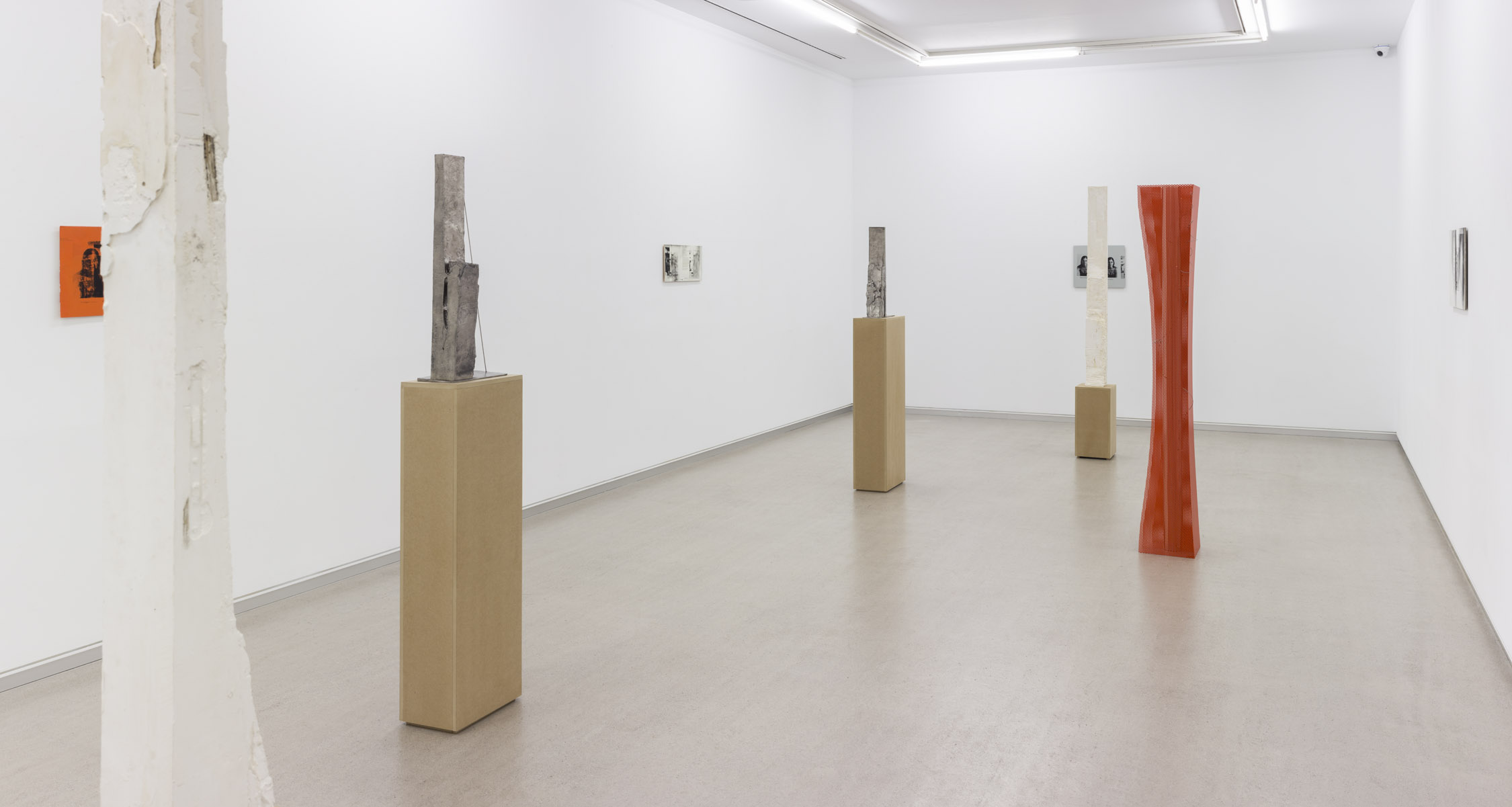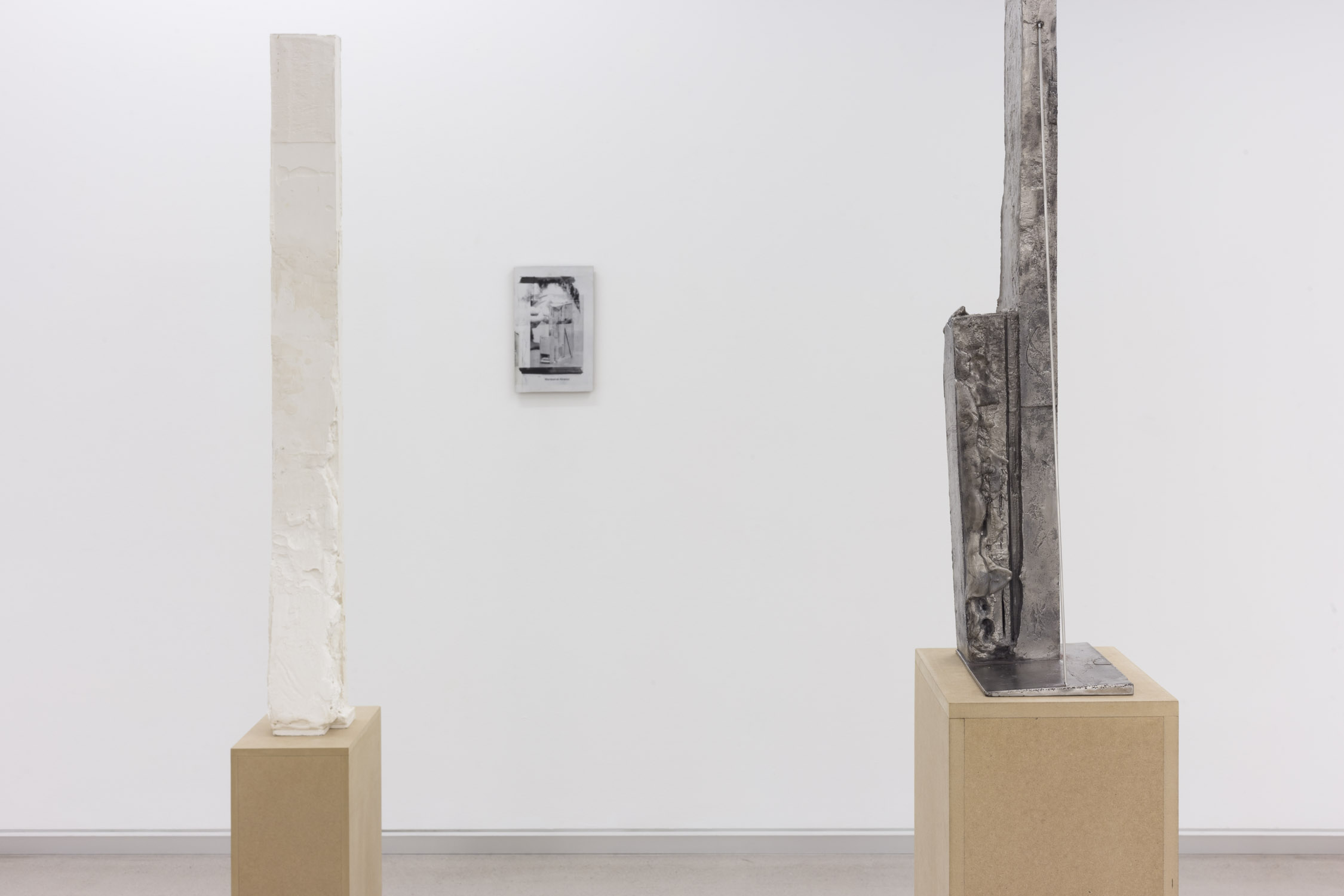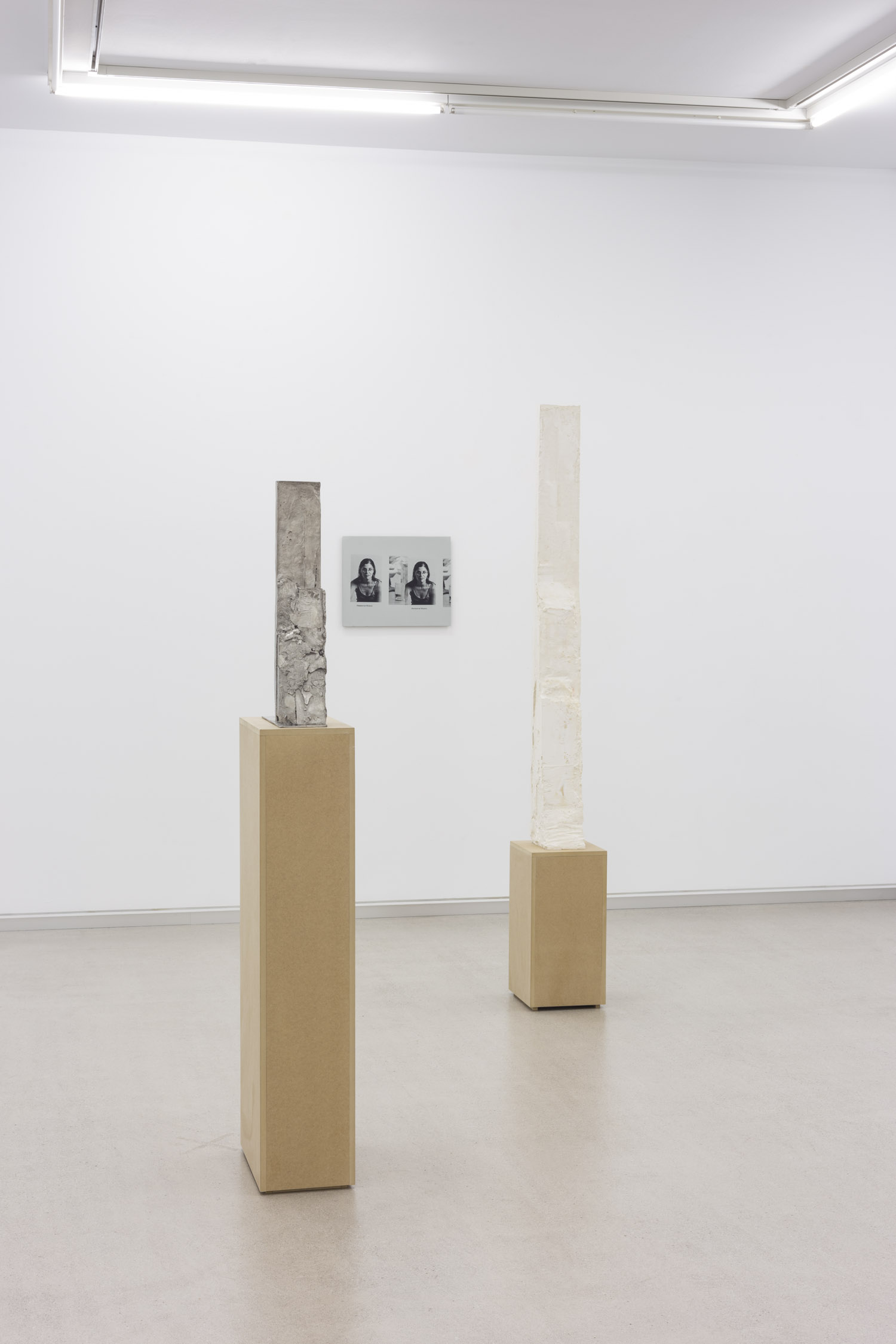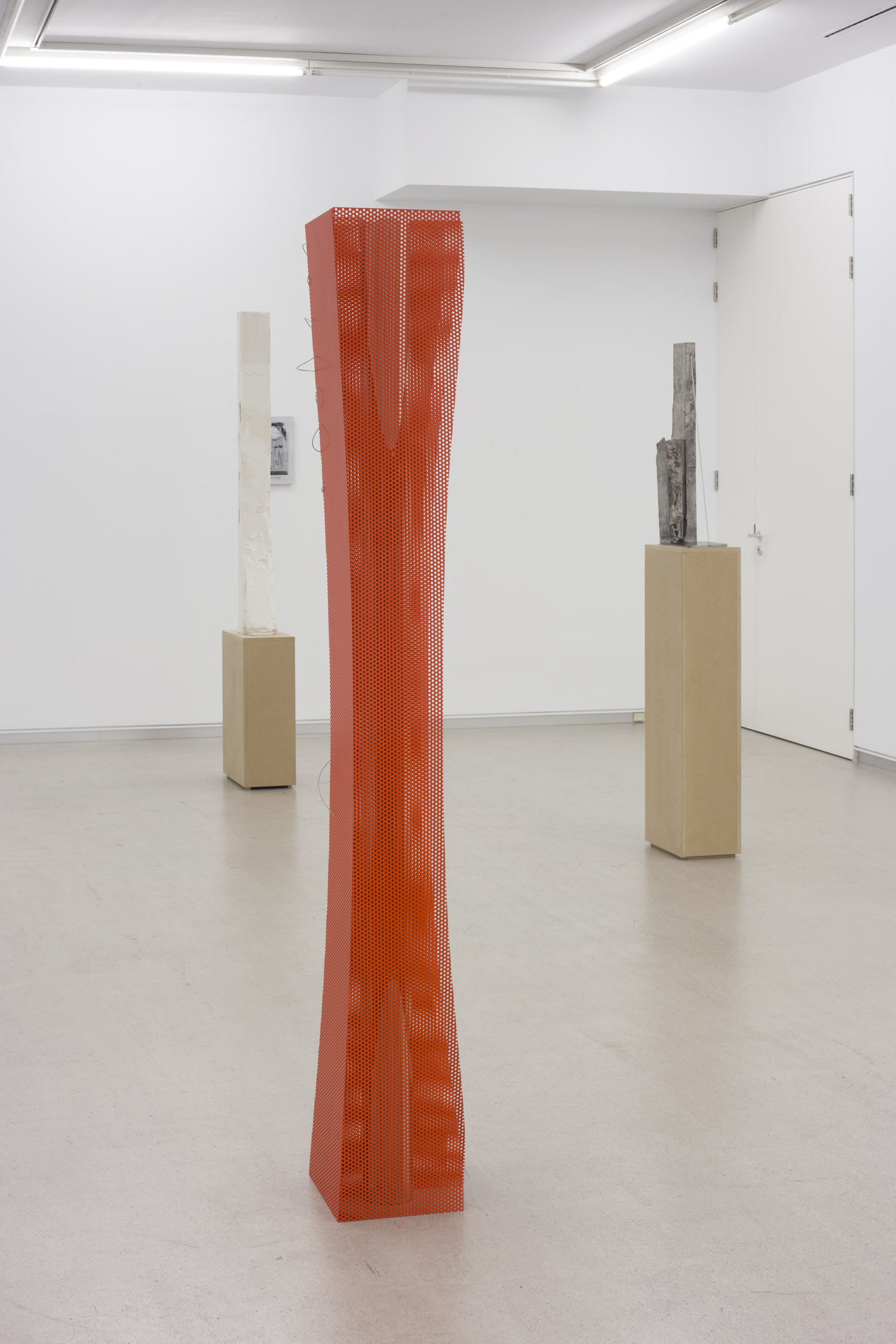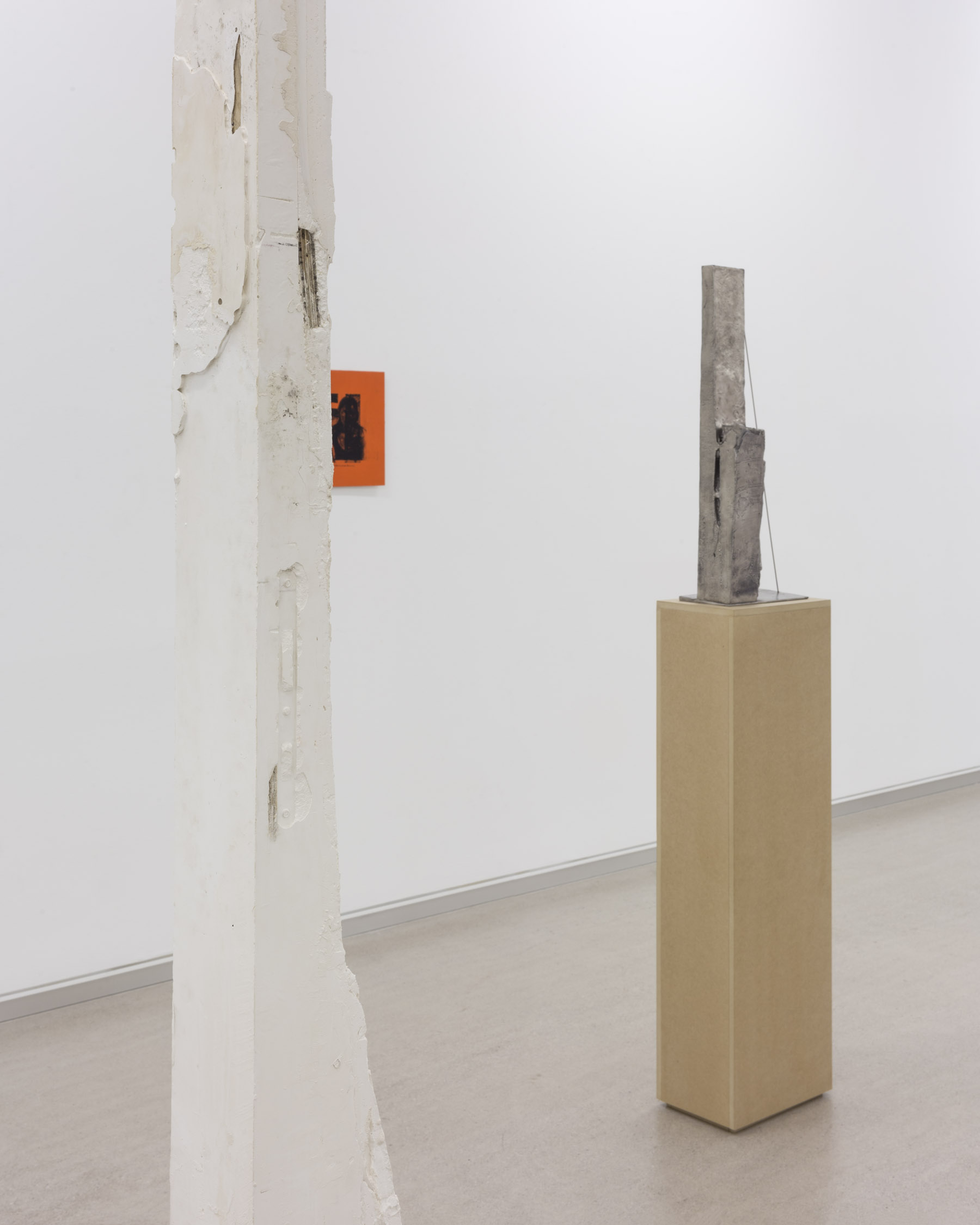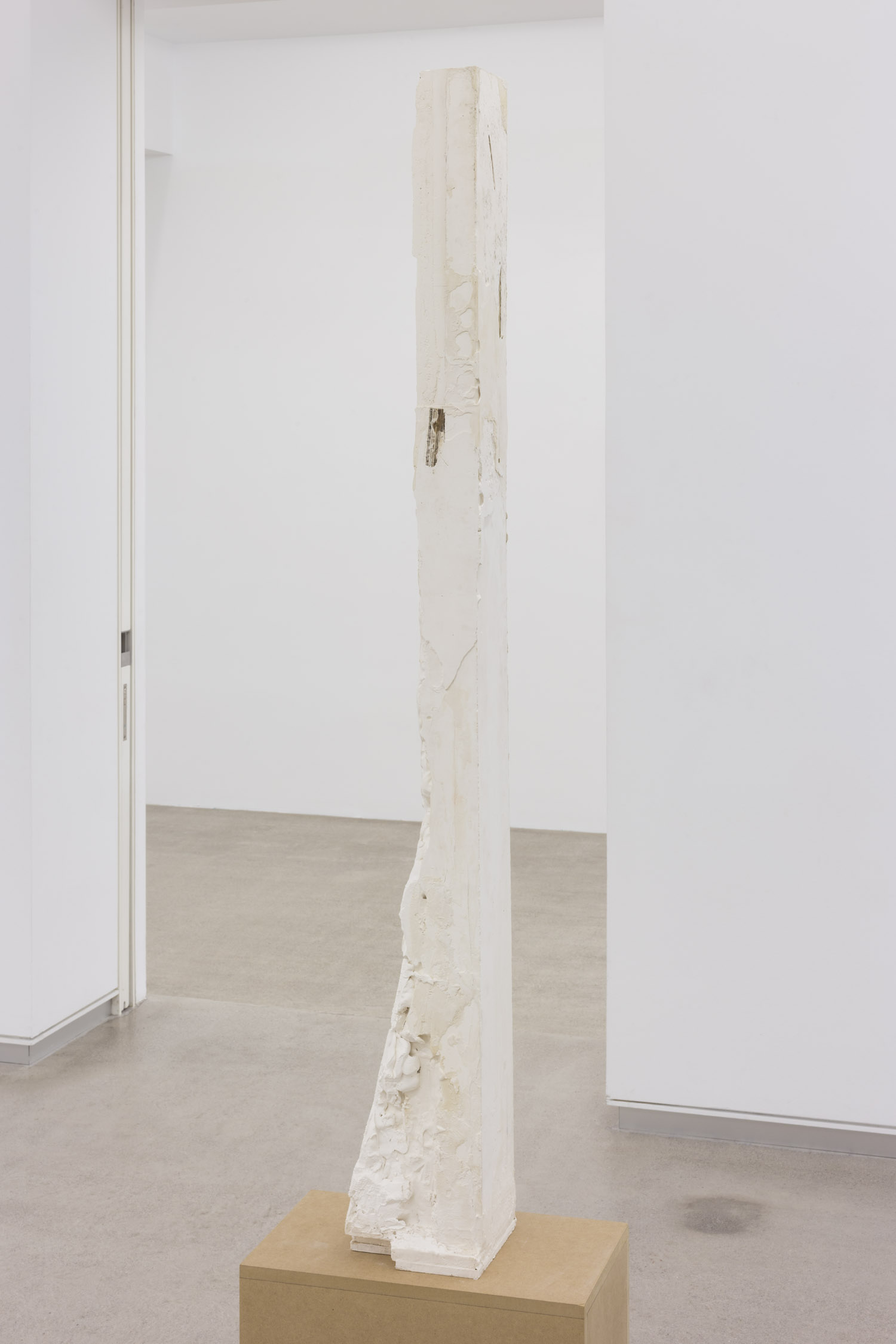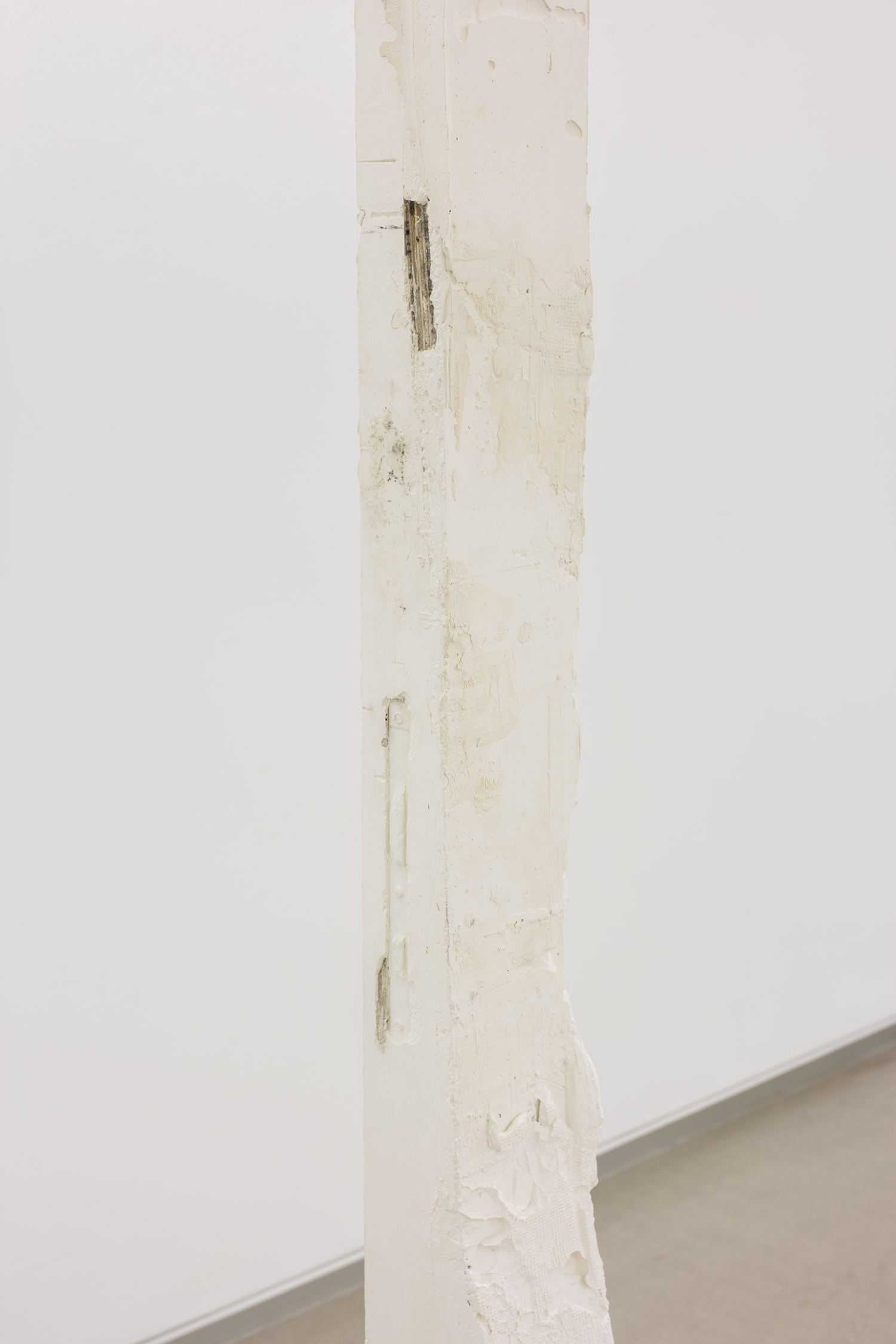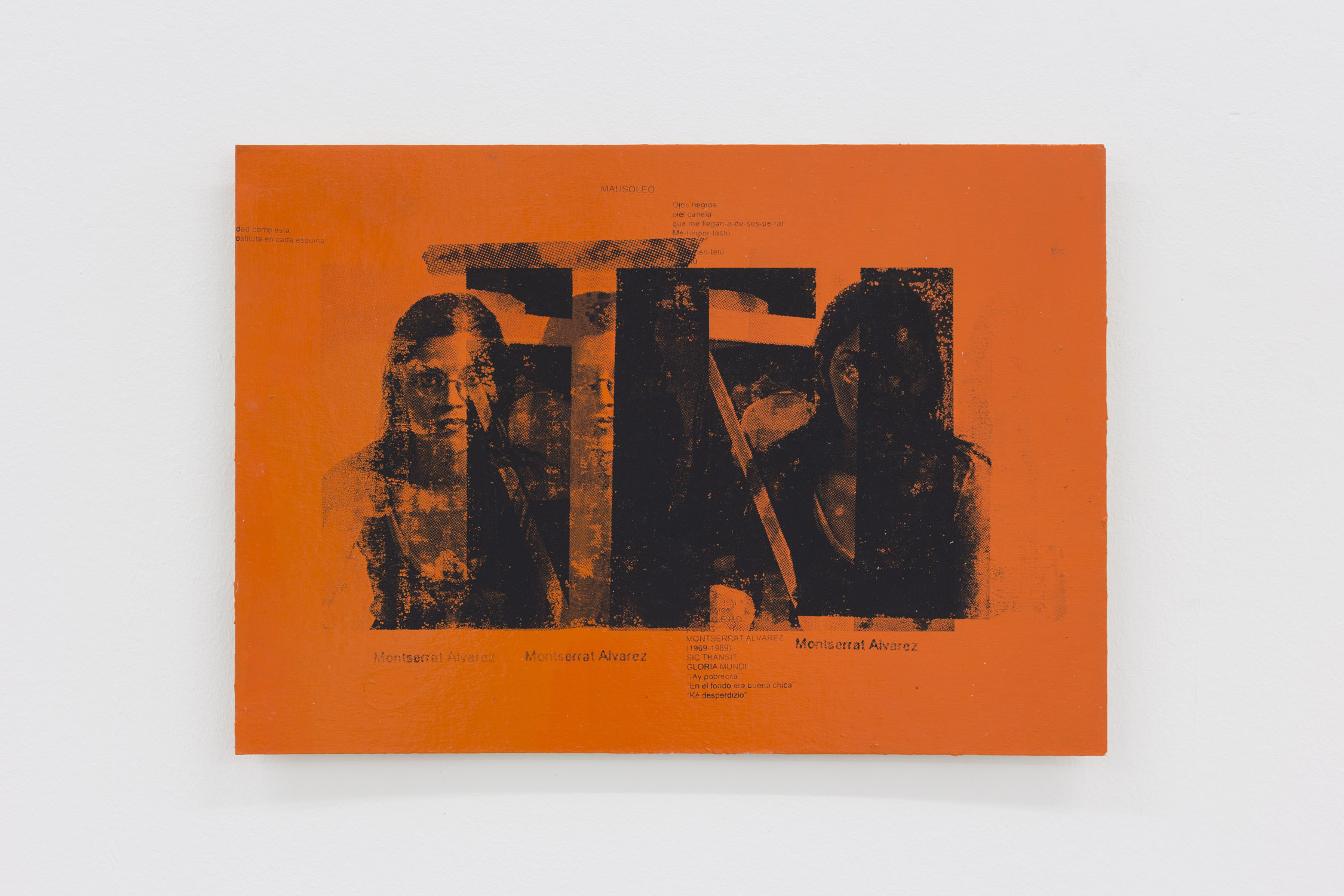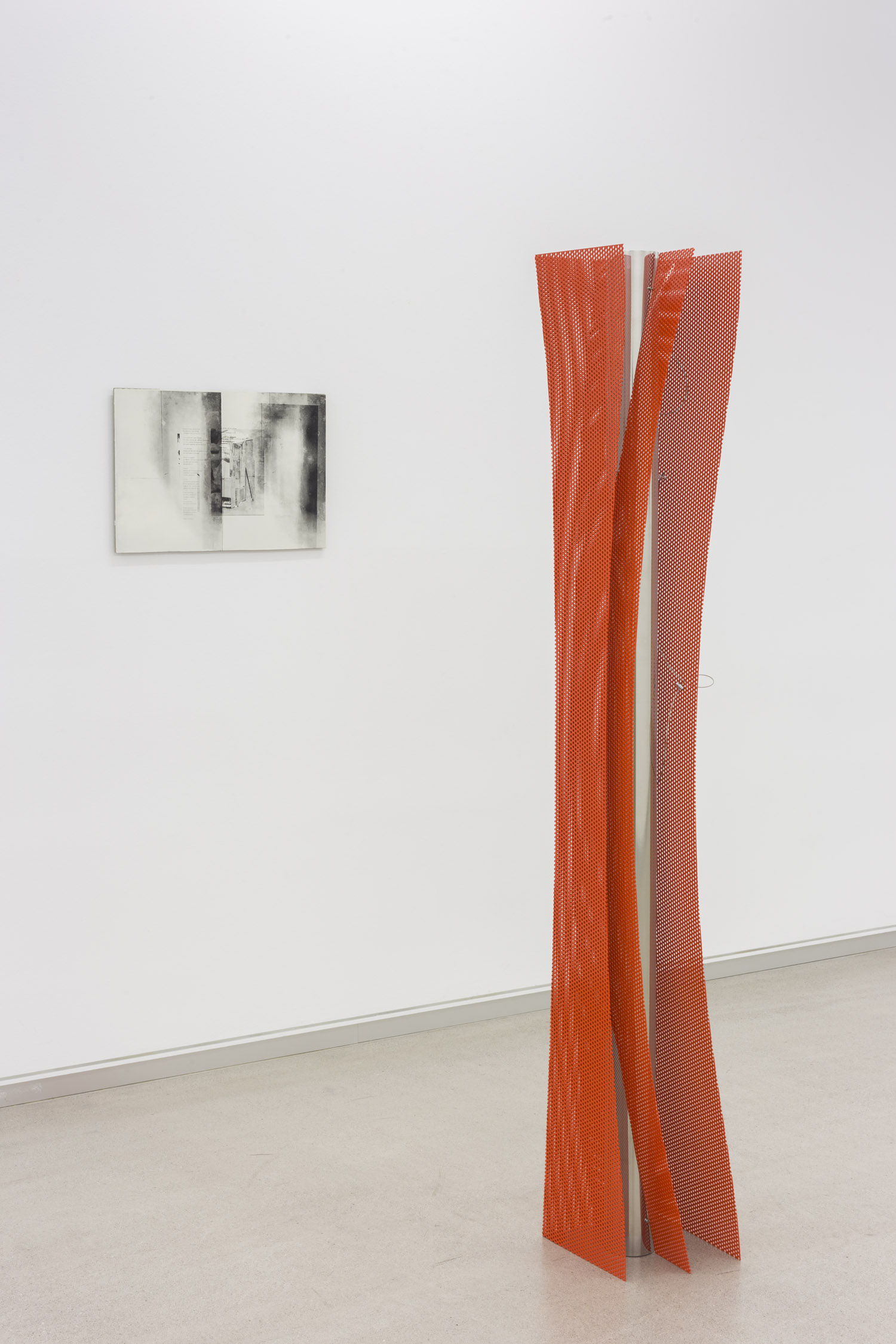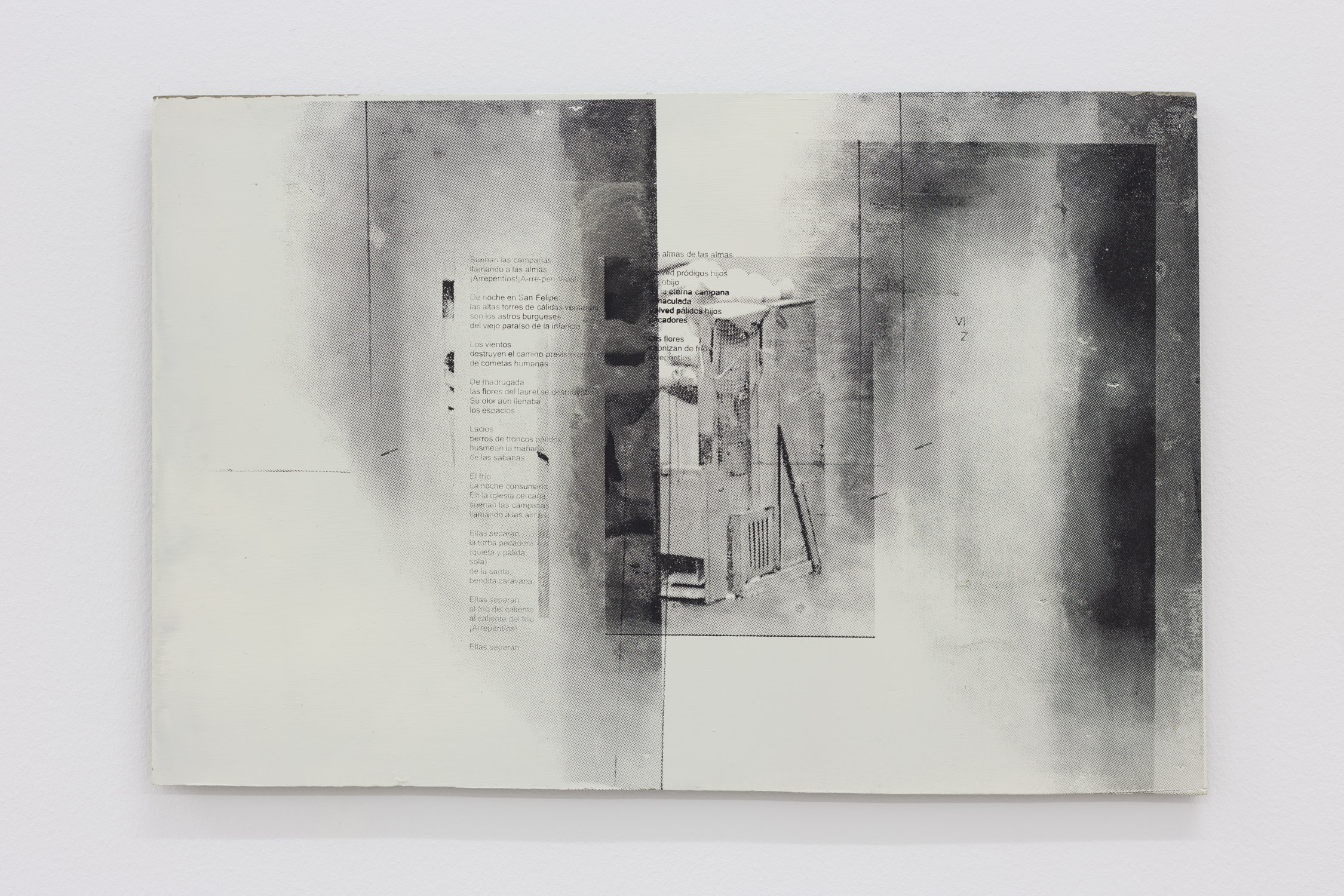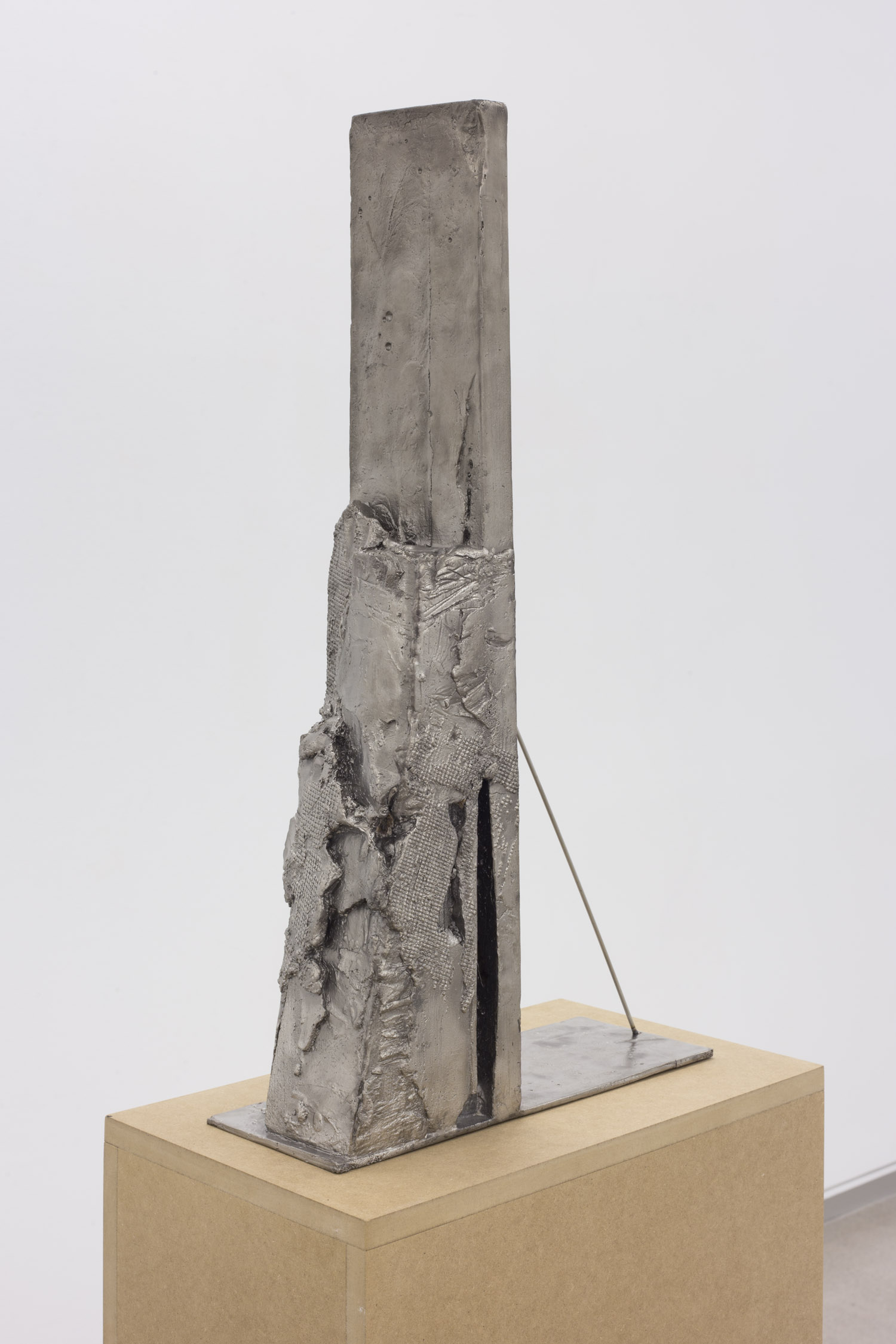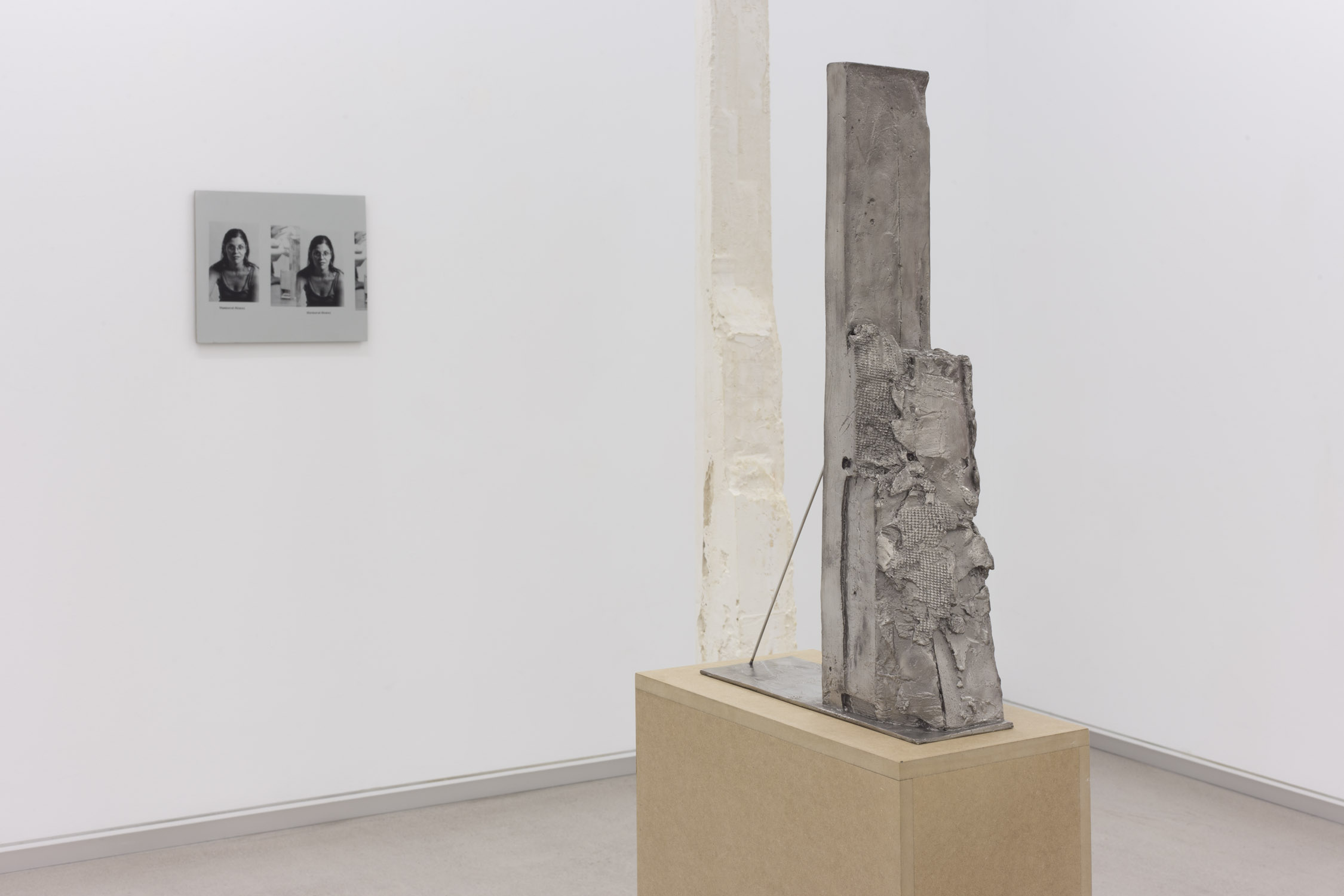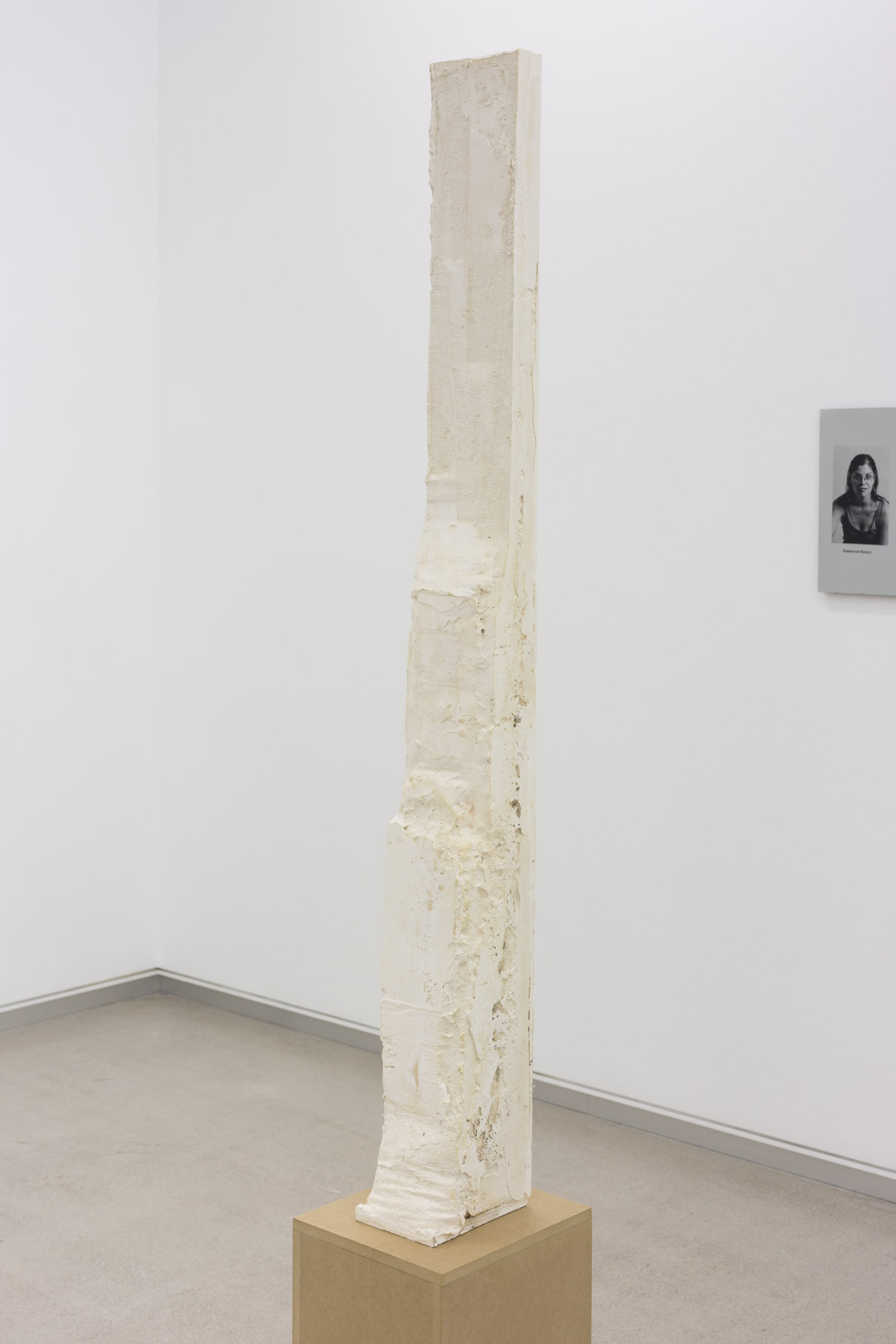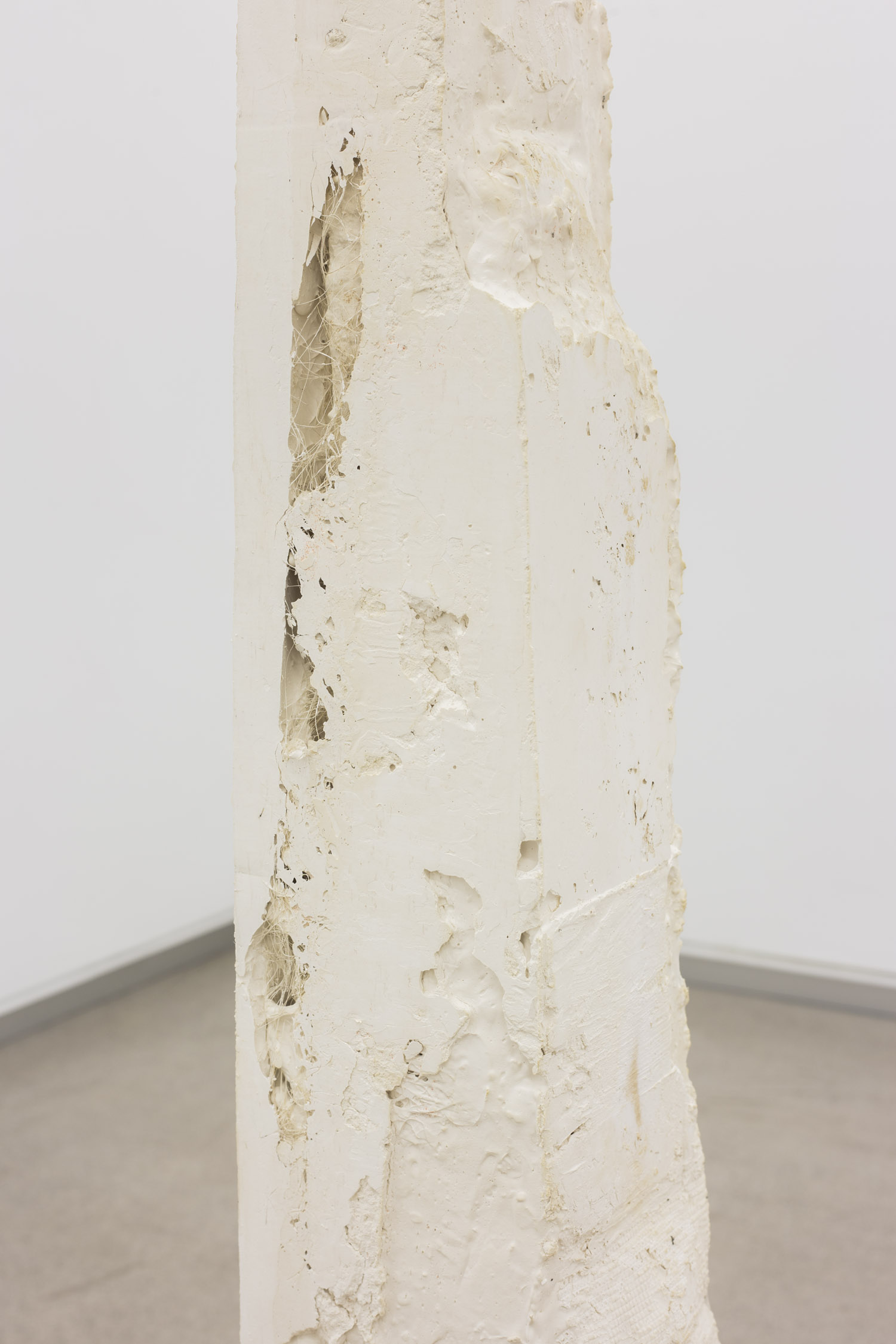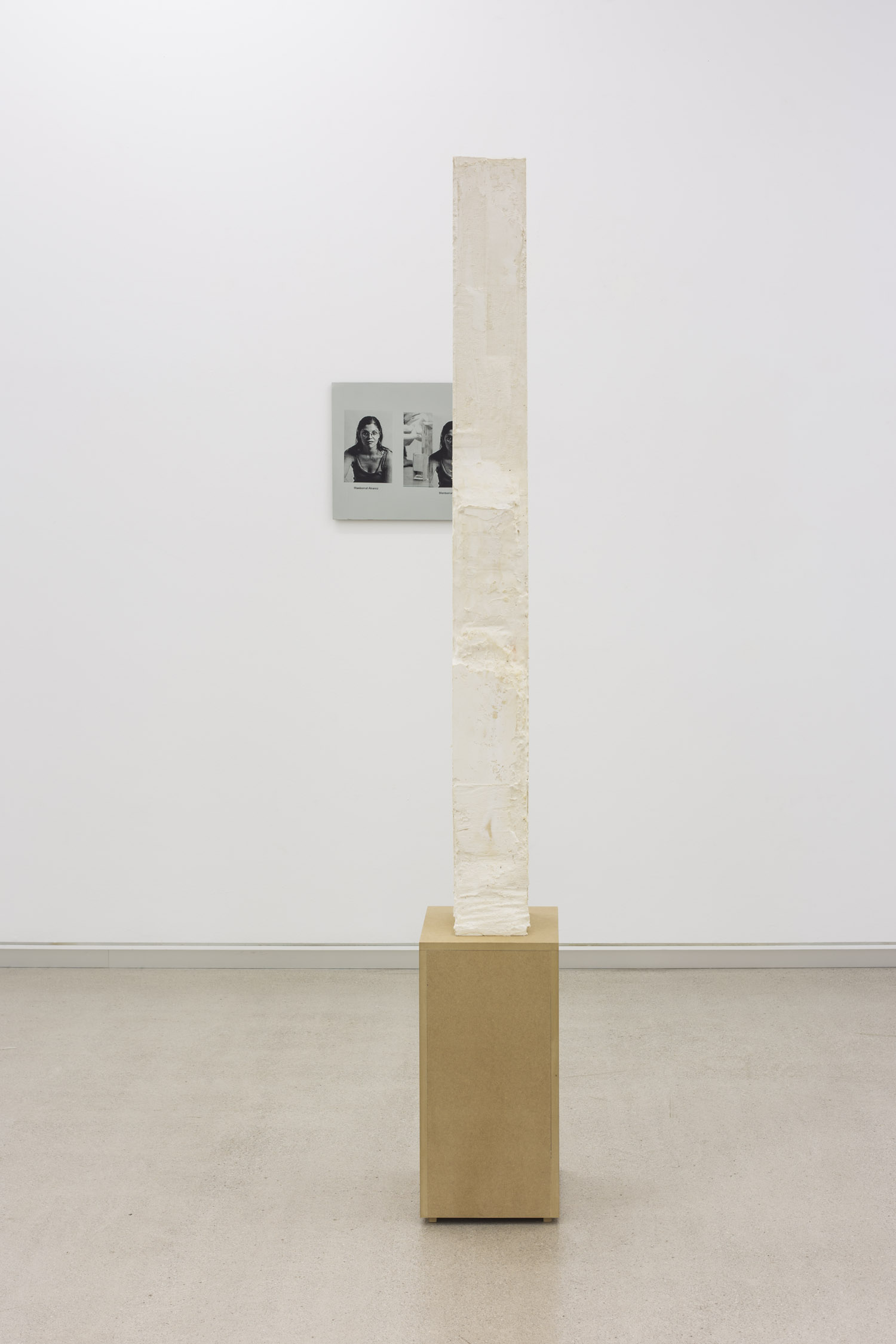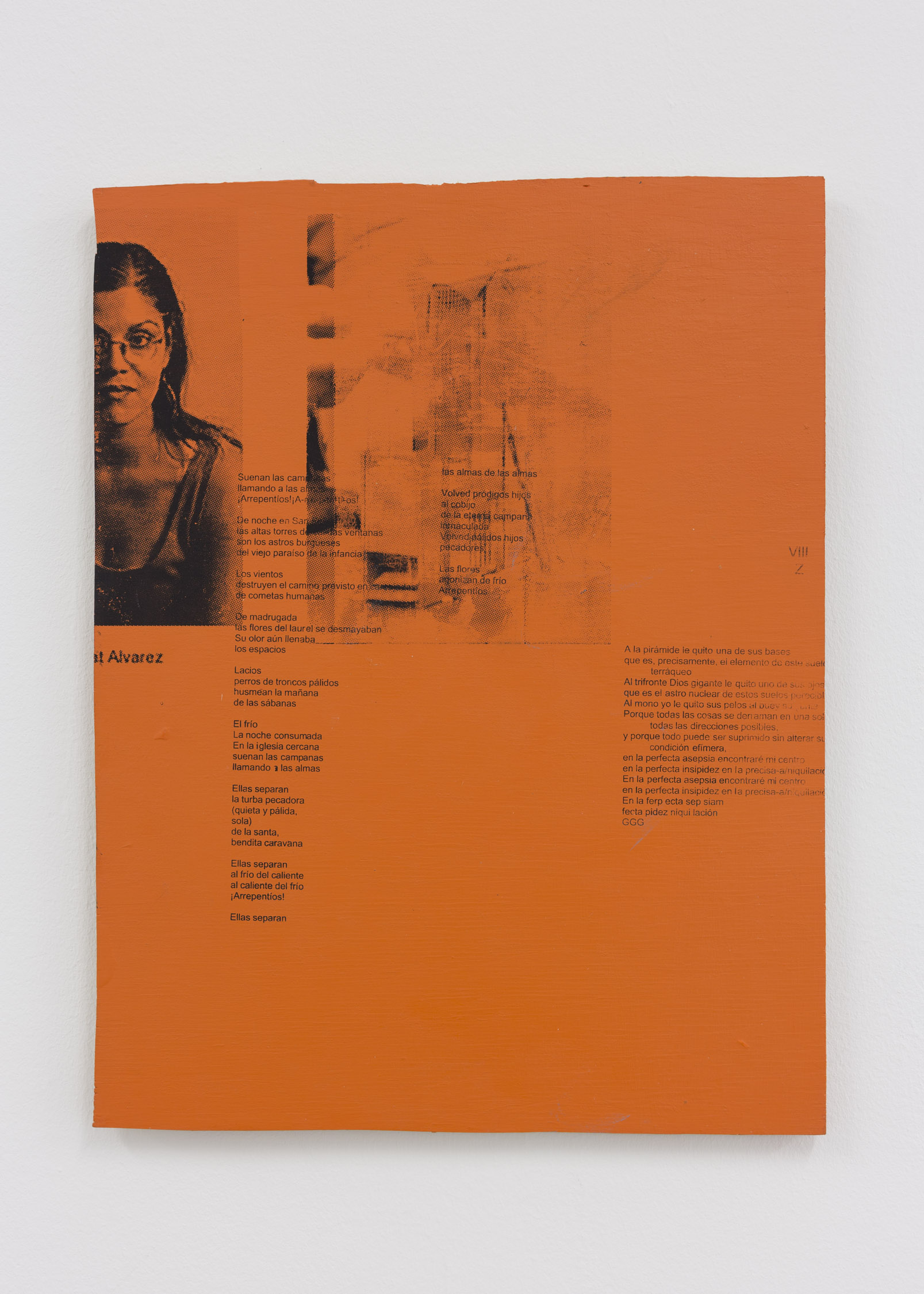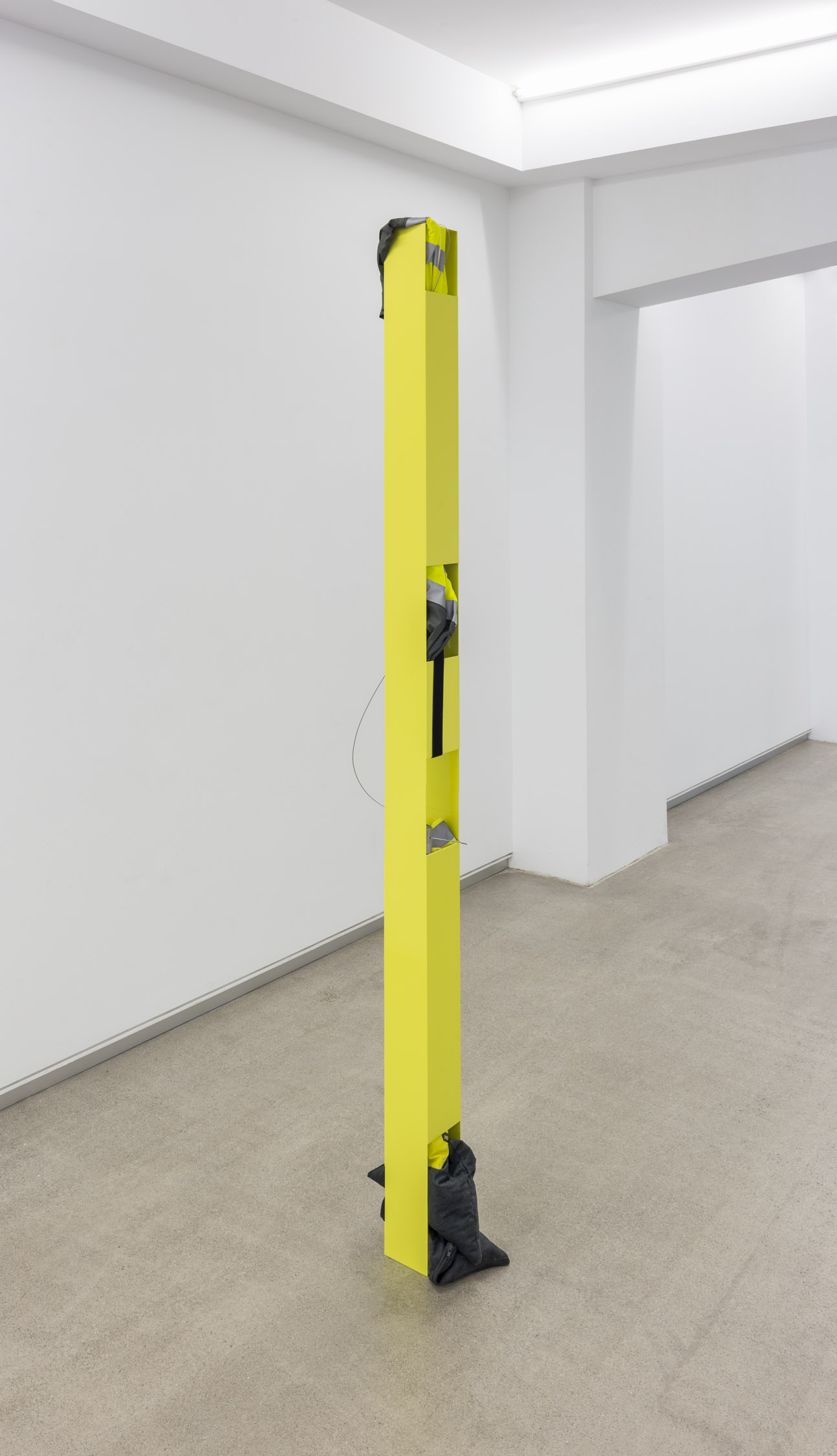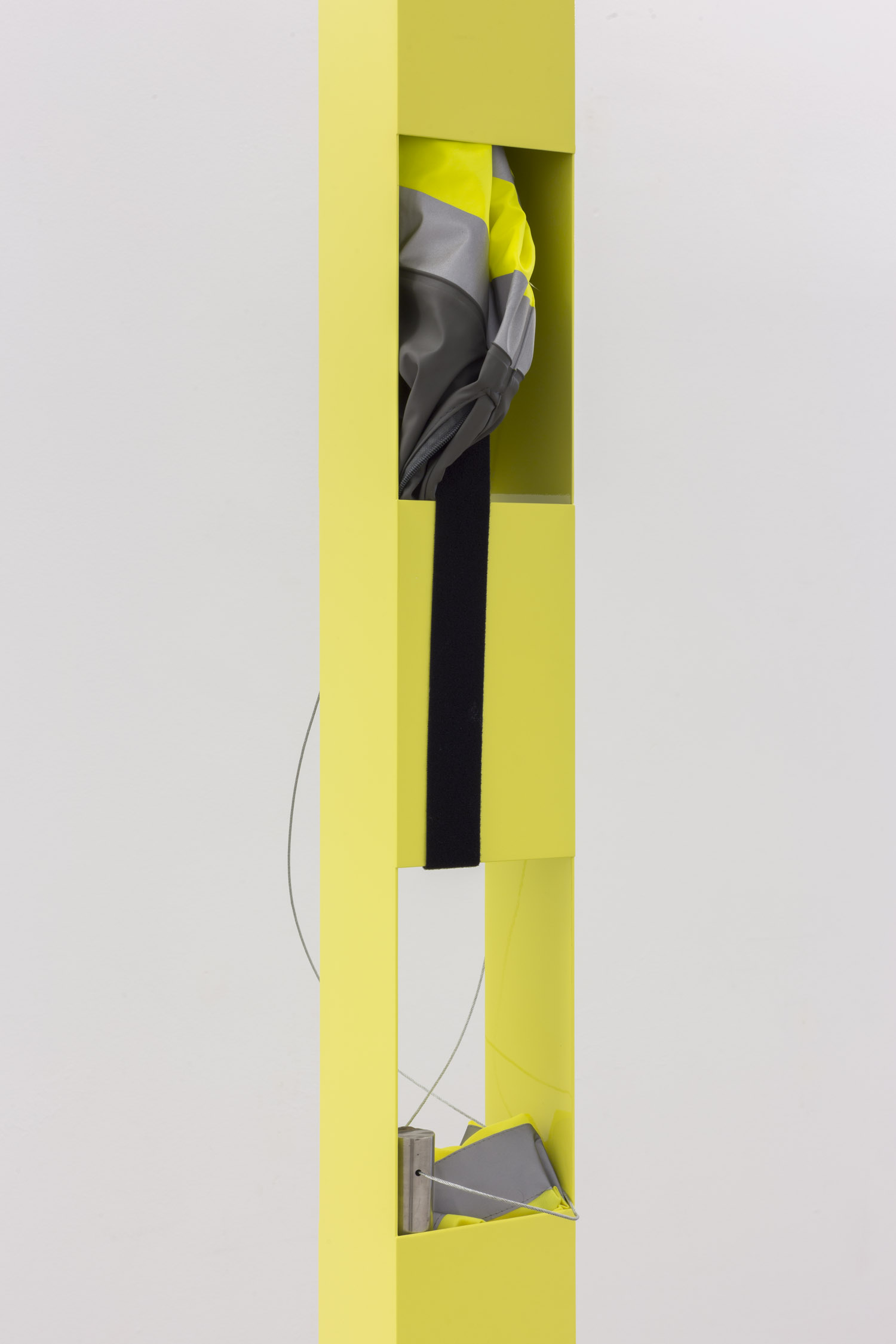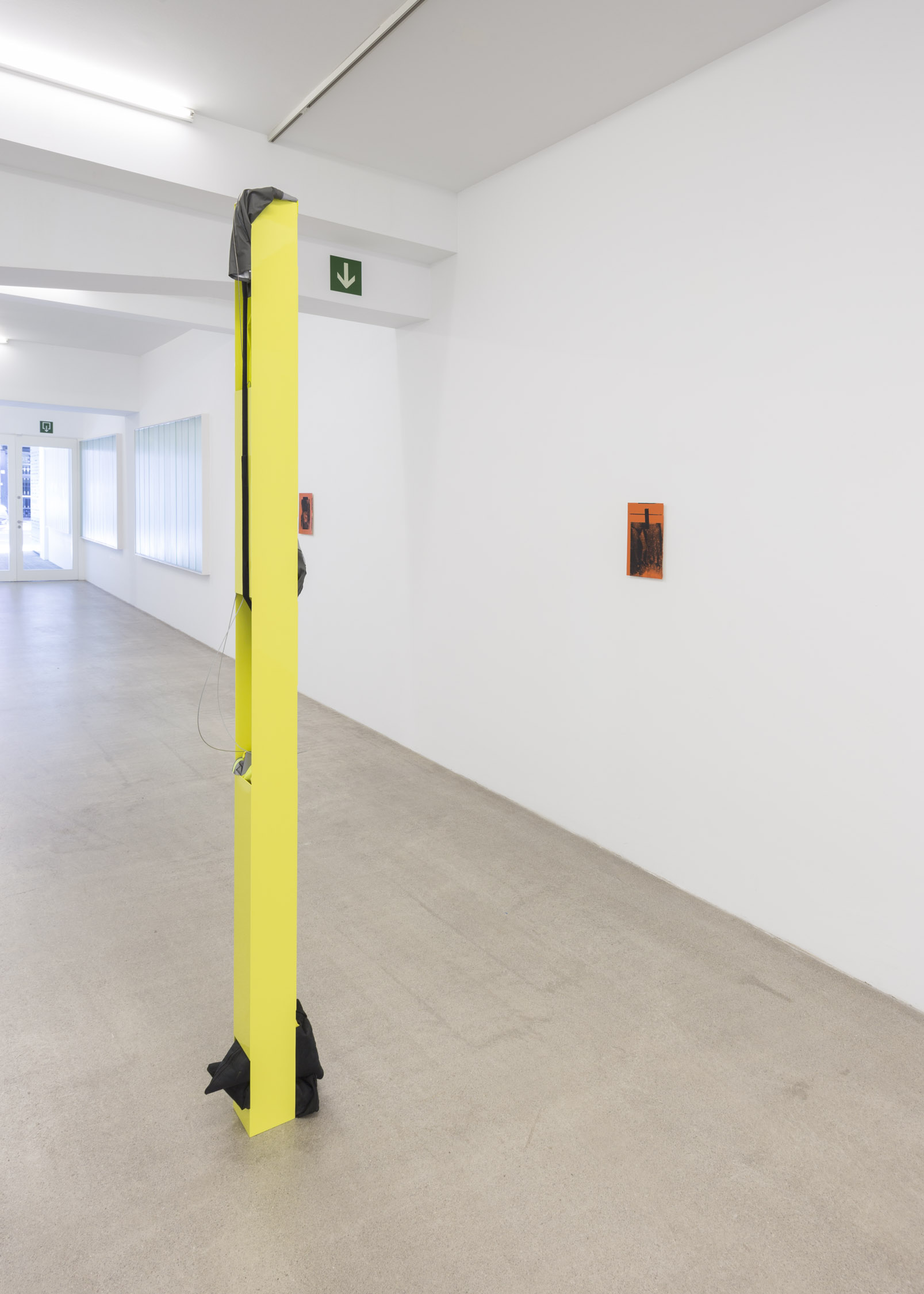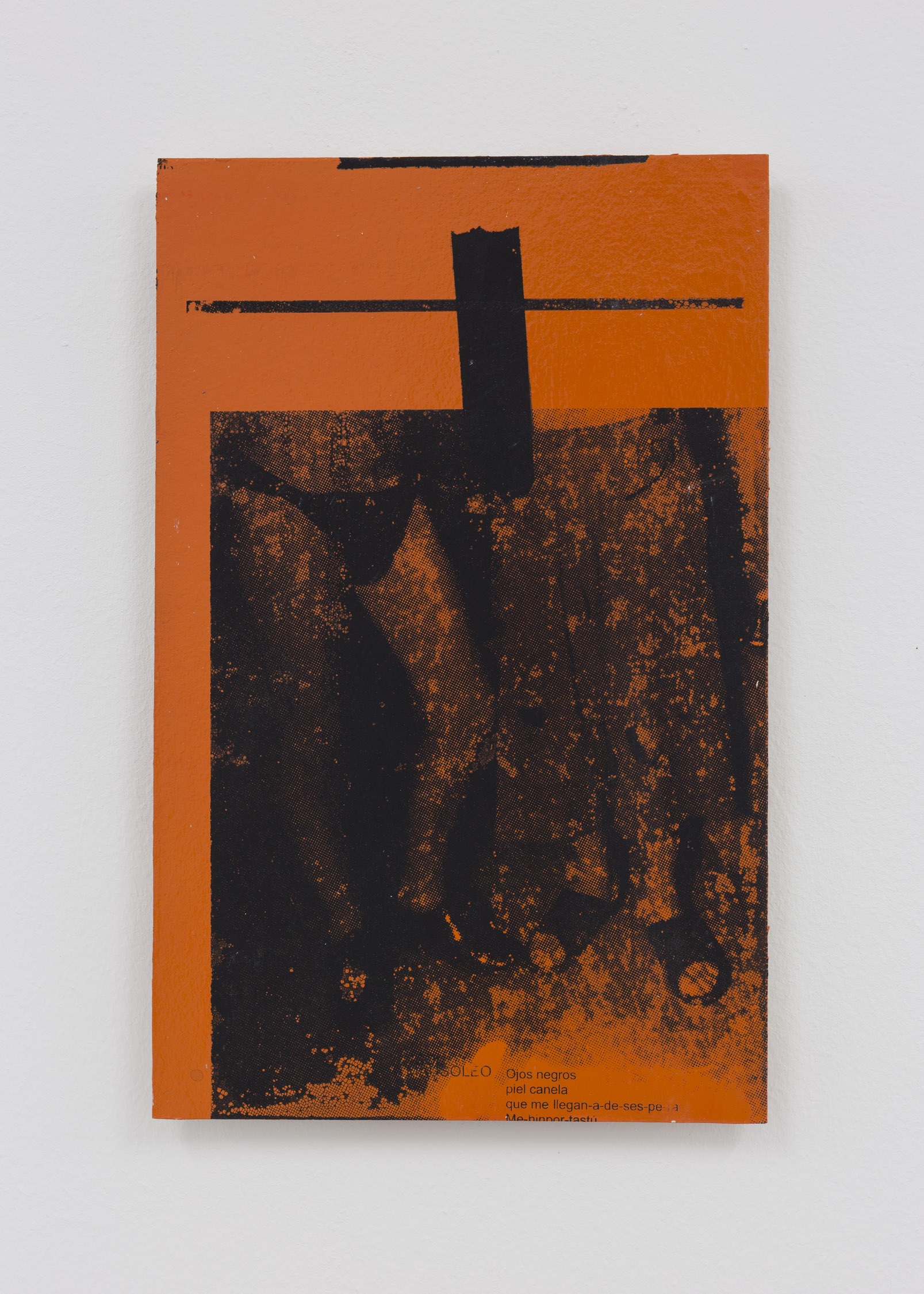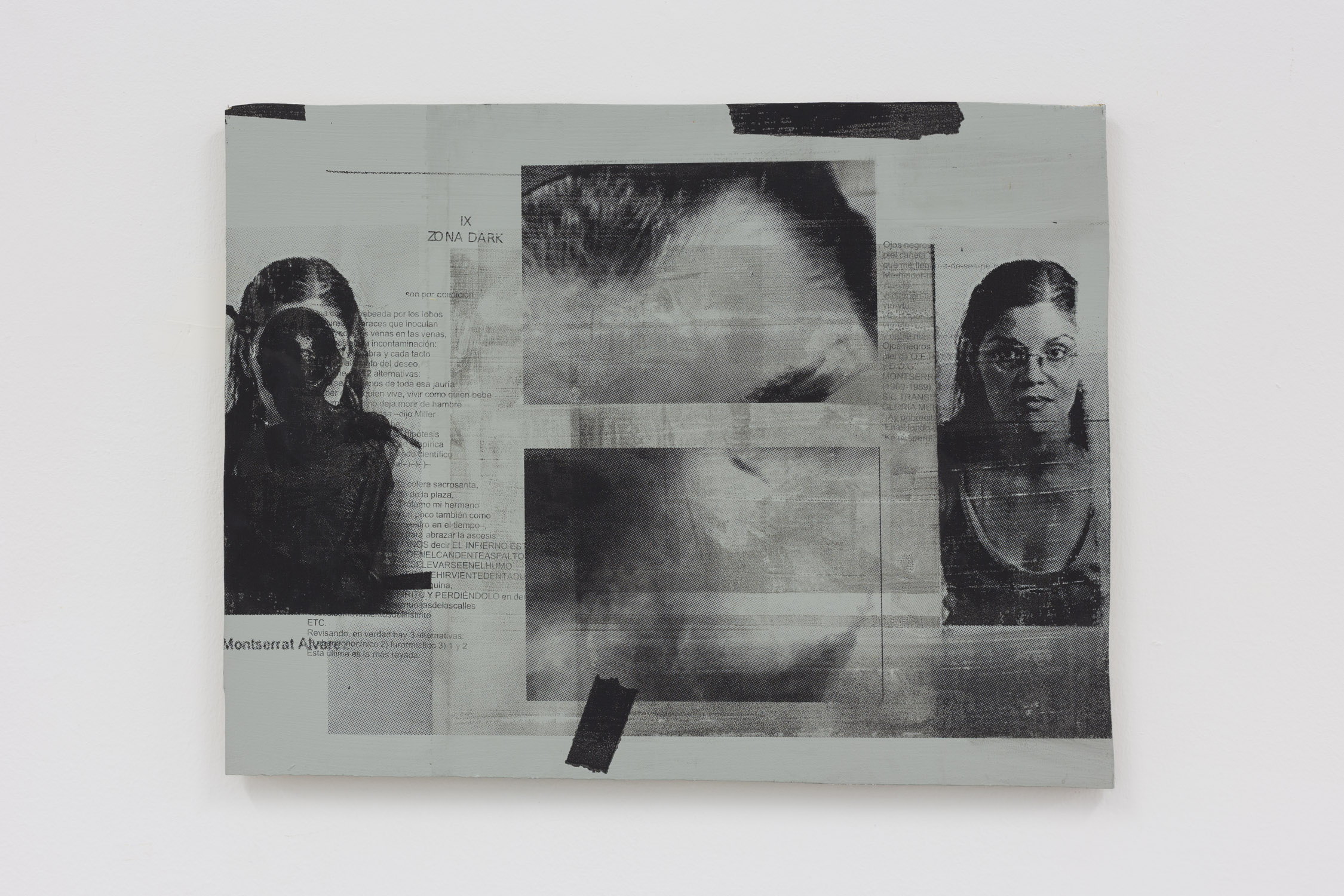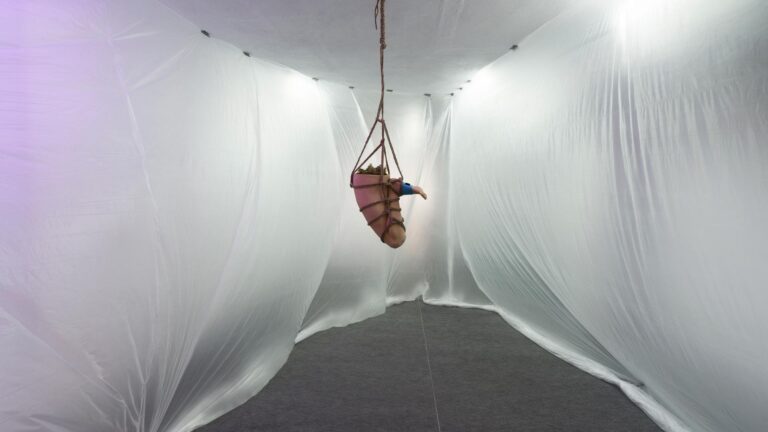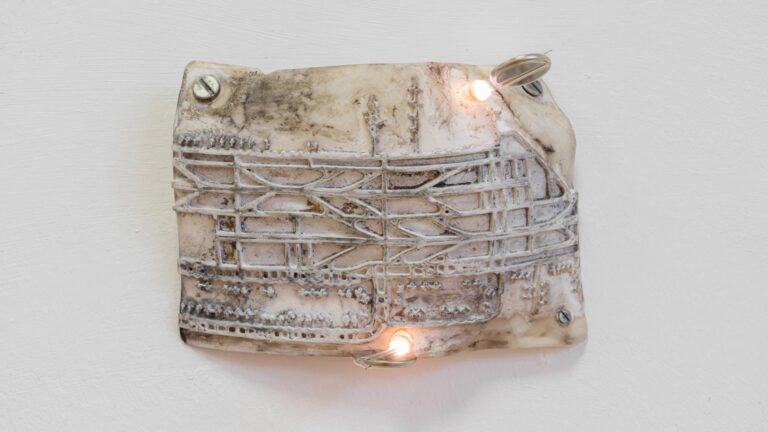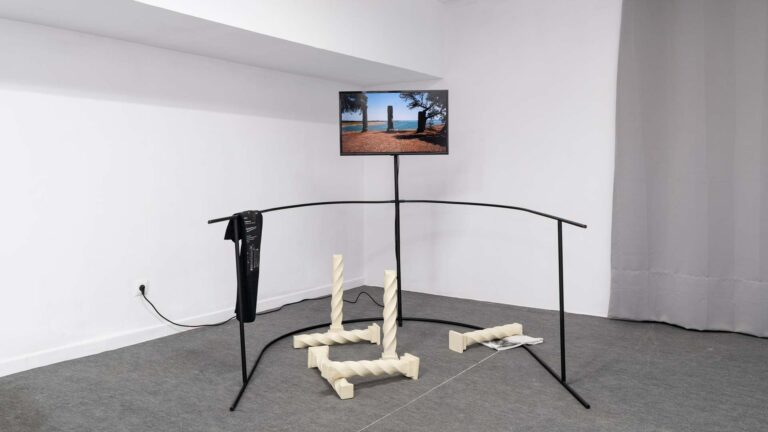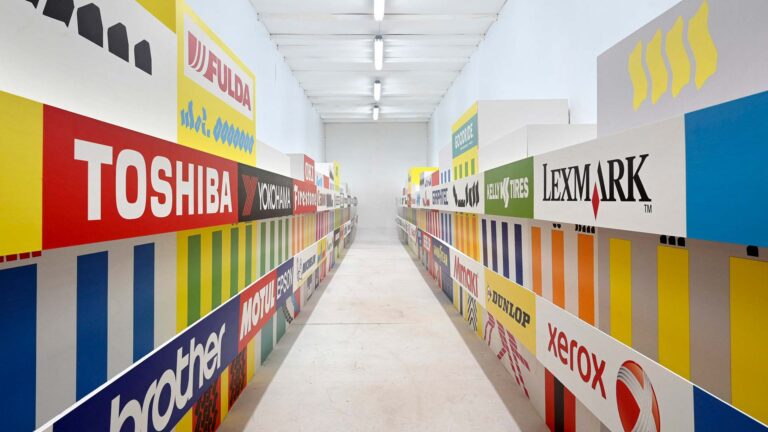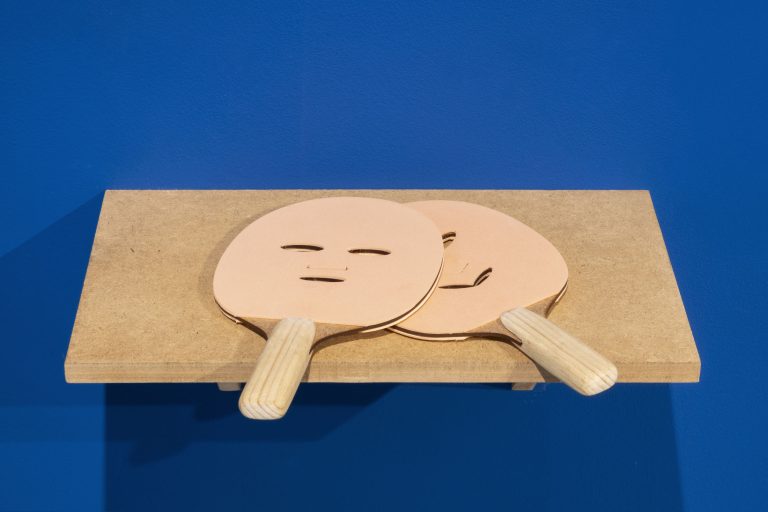Artist: Armando Andrade Tudela
Exhibition title: Montserrat
Venue: CarrerasMugica, Bilbao, Spain
Date: March 1 – May 4, 2024
Photography: Ander Sagastiberri / all images copyright and courtesy of the artist and CarrerasMugica, Bilbao
In 1990 the Peruvian poet Montserrat Álvarez published Zona Dark, a collection of poems which sought to give shape to the experience of being young in a city shrouded in a dark mist. In the late-eighties Lima was deeply unstable, corroded by the armed conflict between the state and terrorism, and by the almost total collapse of the social body.
Zona Dark could be understood as a ‘somatic zone’ representing the uneasy co-existence between the space of the real and the phantasmagorical-theatrical evoked by Álvarez.
Zona Dark manages to provide room for the multiple voices that operate internally at moments of utmost external agitation.
Zona Dark remains highly topical and I am deeply interested in the figure and poetry of Montserrat Álvarez not just as an allusion to a profoundly tense moment in Peru’s recent history (which could resonate with similar collective experiences) but also because of how the poet responds, through writing, to the darkness, unrest and melancholia of her time, which becomes our own.
The series of images gathered under the title M.A año 24 includes the partial reproduction of four texts by Álvarez as well as a portrait of the poet. I have also added to these materials a number of images mostly culled from what one could call ‘our present day’. These images are repeated and folded—with something involuntarily allegorical and polysemic being constructed in the process—until blurring (or confusing) one into another. These images are repeated and folded until Álvarez’s poems end up contaminated by the rubble of the present.
Except for Extraño trato con un trabajador cualificado nº 1 (Strange arrangement of a skilled worker # 1), a yellow column I produced in 2021 which contained a number of workers’ uniforms jammed inside it, the rest of the three-dimensional works are newly produced. GGG (RAL 209) has something of a totem, an instrument of torture and grammatical sign. The two works in plaster, still untitled, have the same width as the side jamb of the front door to my apartment while the series of stainless-steel sculptures, initially conceived as (oversized) representations of brackets, took on their final form when I discovered the mouse trap designed by Carl Bender in the late-nineteenth century.
The practice of the Peruvian artist Armando Andrade Tudela is concerned with the processes of rupture and continuity used to construct narratives of identity, but also with their modes of representation and formalization. As such, the artist aspires to construct an ecosystem in which the political converges with the biographical, the traumatic and the material. His work has been seen recently at MoMA, New York; Proyecto Amil, Lima; CAP Saint-Fons, Lyon; and at Centro Botín, Santander; as well as in gallery shows at Dvir, Paris and Tel Aviv, and at Francesca Minini in Milan. He is currently preparing an audiovisual project for the 15th Gwangju Biennale. Since 2018 he teaches volume and installation in the master’s at the ENSBA school of fine arts in Lyon, where he lives and works.
